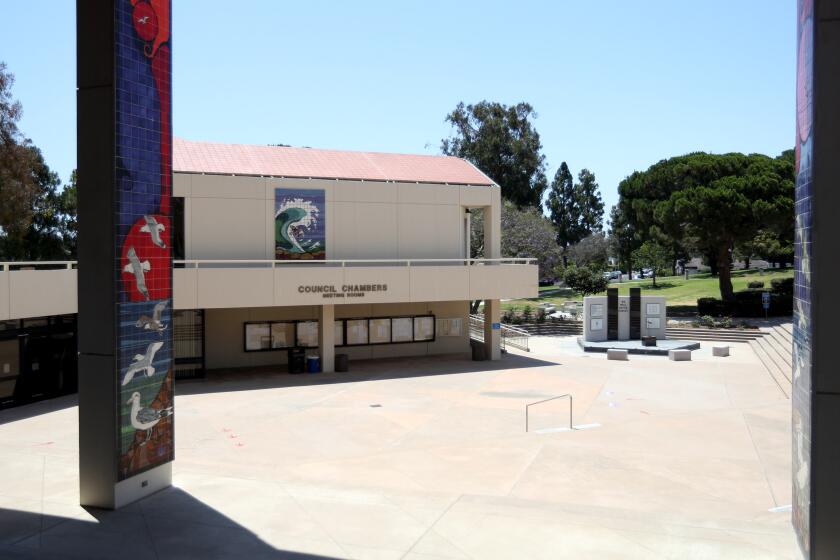Community Commentary:
- Share via
We all know what the community colleges provide. The community college system has been a gateway for graduating high school seniors, displaced workers, returning veterans and community members to meet their educational, professional and vocational goals. The “JCs,†as they were once called, were for many a “starting or re-starting point†in their lives.
Our community colleges are funded primarily with state tax dollars, and as a result of this year’s financial crisis, these institutions are facing severe budget problems now and well into future years, which are unprecedented within the state’s history.
Given the severe economic strains on our economy, community colleges are faced with tremendous demand for their offerings. But, in spite of the great interest in their offerings, the budget crisis has forced districts to reduce scores of classes, to layoff or furlough staff, and in some cases, shut down for the entire summer. Students are faced with fewer educational options, must delay their plans, and in some cases, forgo attending school at all. This situation is very catastrophic, and is unlikely to change for some time, given the state’s moribund economy and double-digit unemployment rate.
But recent startling developments from Sacramento will put even more pressure on the community college system. And these educational budget reductions are impacting people and kids you know in your own neighborhoods. This crisis is becoming personal with people losing jobs, homes, finances and, now, their futures.
In addition to reducing the budget for community colleges, California has taken the drastic step to permanently reduce the number of students that college districts can serve.
This “Full Time Equivalent Students,†or “FTES,†represents a full-time student taking 15 units for both semesters, totaling 30 units in an academic year. For the Coast Community College District the state’s workload reduction amounts to a reduction of 1,260 credit FTES for 2009-10 and 1,510 unfunded FTES already served in 2008-09, totaling 2,770 credit FTES needed to be reduced in 2009-10. This represents 27,700 classroom seats that must be reduced in 2009-10 in order to live within the provided budget. While this workload reduction will be spread throughout our three colleges, it effectively amounts to eliminating 8% of full-time enrollment at all our colleges.
These cuts are severe and devastating to our students, community, faculty and staff. I strongly encourage our residents to contact their local legislators and share their concerns about how these punitive and permanent apportionment reductions from Sacramento will limit the opportunities of our students to achieve their goals, will hurt our economy by reducing our ability to educate and train qualified workers, and will hurt our faculty and staff, who devote their professional endeavors to serve our students. Given the complexity of community college budgeting, the more people we can inform about the drastic nature of these cuts and their impacts to students and the community, the better case we can make for helping to restore some of the funding the state is proposing to take away from us for the long term.
As a result of a very bad budget year, the state university system has slammed the door on many prospective students, many of whom are now turning to community colleges to help meet their educational goals. We cannot turn people away, but we have now become even more restricted in the number of students that we can serve. It is up to all of us to contact the elected officials in Sacramento to let them know of the individual impacts their actions have caused.
JIM MORENO is president of the Coast Community College District Board of Trustees and resides in Huntington Beach.
All the latest on Orange County from Orange County.
Get our free TimesOC newsletter.
You may occasionally receive promotional content from the Daily Pilot.









